The March on Rome and Benito Mussolini’s Quest to Turn Italy Into a Fascist Nation
The March on Rome was the start of great political and societal change within Italy. Led by Benito Mussolini, the march aimed to tear down the existing government and replace it with a Fascist one, led by Il Duce himself. He and his followers were successful, leading to two decades of dictatorship that continued into the Second World War – that is, until Mussolini’s government collapsed in 1943.
Benito Mussolini went from a Socialist to a Fascist
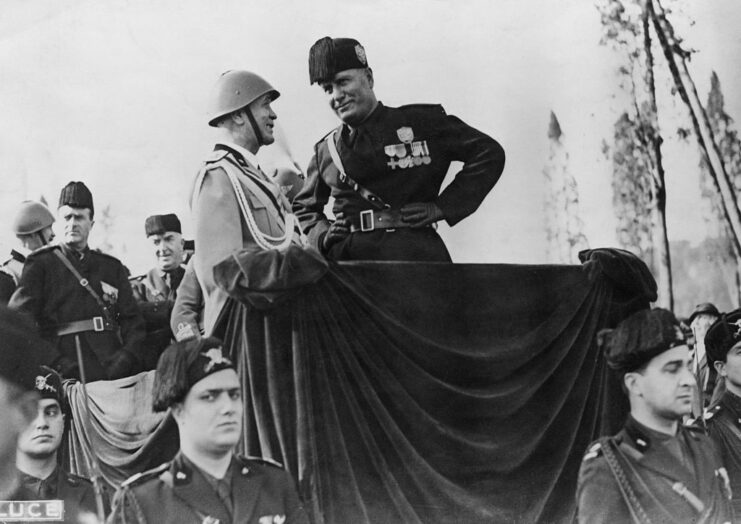
Benito Mussolini, born on July 29, 1883, in Verano di Costa, Italy, began his political journey as a Socialist. For much of his early adulthood, he traveled across Switzerland as part of the movement, and even relocated to Austria-Hungary to work as an editor for a Socialist newspaper. While he was eventually deported back to Italy, he managed to find work with another publication, only to be jailed six months later for inciting violence.
Mussolini’s views shifted dramatically while he was serving in the Italian Army during the First World War. He’d initially opposed Italy’s involvement in the conflict, but later advocated for intervention, believing it would lead to a revolution within the country. This line of thinking (and the actions he did to promote it) resulted in his removal from the Socialist Party.
Mussolini then founded the Fascist movement in Italy, emphasizing nationalism, militarism and anti-socialism. His transition from Socialism to Fascism was driven by his belief that only a strong, authoritarian government could restore Italy’s greatness, which, as it turned out, resonated with many Italians at the time.
Birth of Italy’s National Fascist Party (PNF)
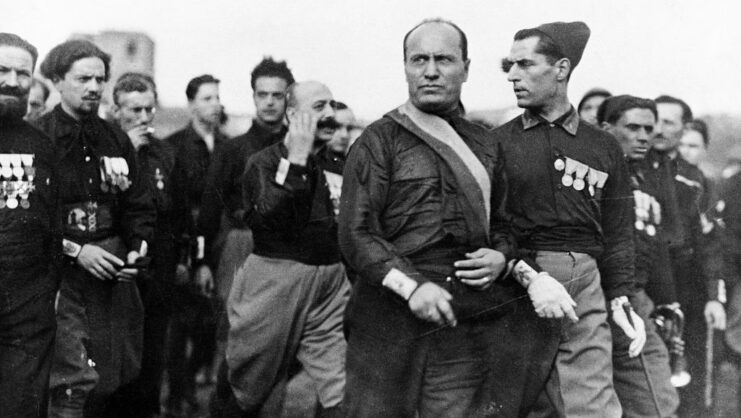
The National Fascist Party (PNF) of Italy was founded in November 1921. However, its roots traced back to Benito Mussolini’s Fasci di Combattimento (“Fighting Bands”), which was established in 1919.
The party capitalized on the widespread social unrest and economic instability Italy was experiencing, positioning itself as a defender of traditional values and a bulwark against Socialism. Key figures included Italo Balbo, Emilio De Bono and Cesare Maria De Vecchi, all of whom played a role in the March on Rome.
The PNF’s rise was fueled by its paramilitary wing, the Blackshirts (officially the Voluntary Militia for National Security), who used violence and intimidation to suppress any opposition. Their uniforms were modeled after those worn by the Arditi, shock troops who served in the First World War, and their tactics were equally as harsh as their wartime brethren.
Under Mussolini, the party’s ideology combined nationalism, corporatism and anti-Communism, appealing to a broad spectrum of Italian society. By 1922, it had grown into a formidable political force that was prepared to challenge the liberal government for control of Italy.
Setting the stage for the March on Rome
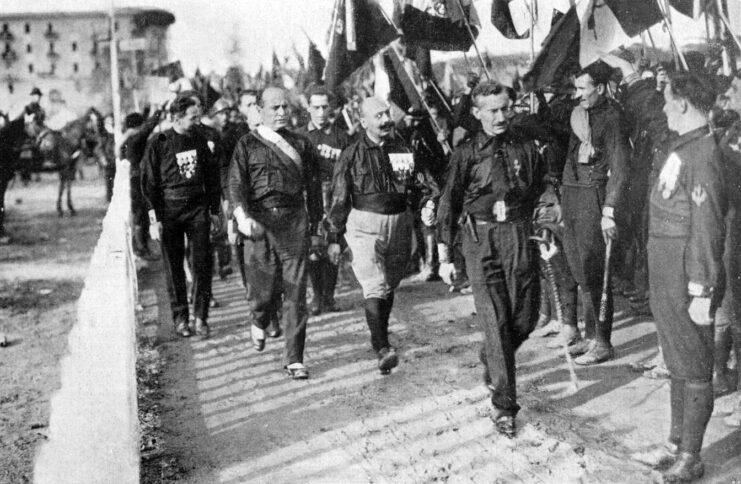
The lead-up to the March on Rome was marked by escalating violence and political maneuvering. In August 1922, a general strike organized by the Socialists provided Benito Mussolini with an opportunity to position the Fascists as protectors of law and order. The strike’s failure, largely due to Fascist intervention, bolstered the future prime minister’s image and emboldened his aim for a power grab.
Mussolini and his associates meticulously planned the March on Rome. They aimed to exploit the government’s weakness and King Victor Emmanuel III’s indecisiveness, claiming they couldn’t wait for a “parliamentary solution” to Italy’s woes.
On October 24, 1922, in front of a crowd of 60,000 militants at Naples, Mussolini declared that the Fascists were ready to seize power. The Quadrumvirs – Michele Bianchi, Emilio De Bono, Italo Balbo and Cesare Maria De Vecchi – were appointed to lead the march, while Il Duce, as he later became known, traveled in Milan to coordinate and lead negotiations.
Executing the March on Rome
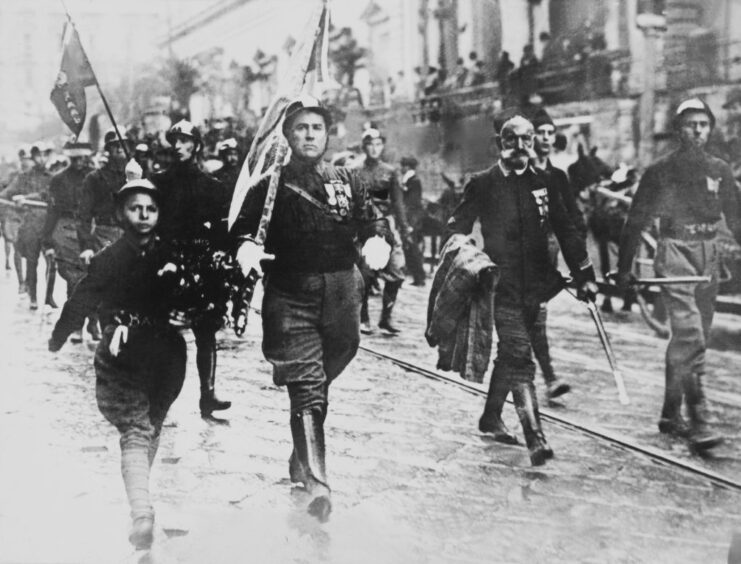
Leading officials were aware Benito Mussolini and his Fascist supporters were preparing to exact action against the government and tried to enacted a “state of siege” for Italy’s capital city, but King Victor Emmanuel III refused to sign the order. Little did he know at the time that this decision would make it more than easy for Mussolini to begin his acquisition of power.
On October 28, 1922, the March on Rome began, with thousands of Blackshirts converging on the Italian capital. Despite the show of force, the actual number of marchers was less than 30,000 over the subsequent days.
The march itself was more of a psychological victory than a military one. The Blackshirts’ presence in the city and the king’s decision to cede to Mussolini’s threats without a fight demonstrated the Fascists’ ability to manipulate the political landscape.
Benito Mussolini’s consolidation of power
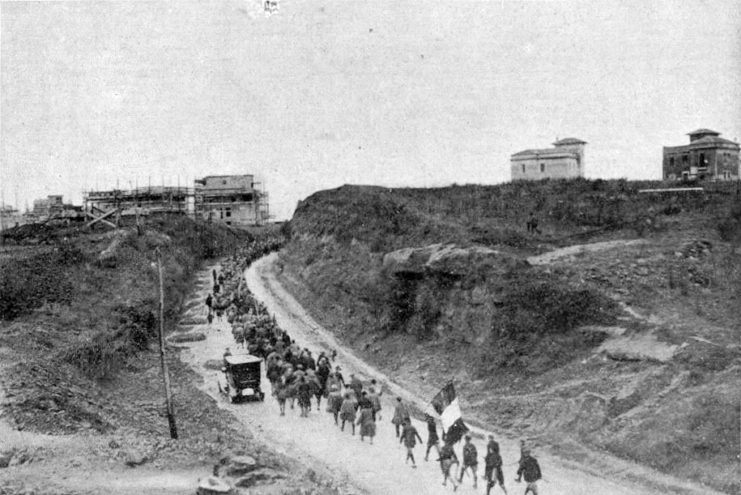
In the immediate aftermath of the March on Rome, Benito Mussolini moved quickly to consolidate his power, having been named Italy’s prime minister. He formed a coalition government, but it was clear that the Fascists were in control.
Over the next few years, Mussoloni systematically dismantled democratic institutions and established a dictatorship. By 1925, he’d assumed the aforementioned title of Il Duce and ruled over Italy with an iron fist.
Mussolini’s rise to power had profound implications for Italy. His regime implemented policies aimed at creating a totalitarian state, with strict control over the media, education and the economy. The Fascist government also began an aggressive foreign policy (spazio vitale, or “living space”), seeking to expand the country’s influence and territory.
All this set the stage for Italy’s involvement in the Second World War.
Italy enters World War II
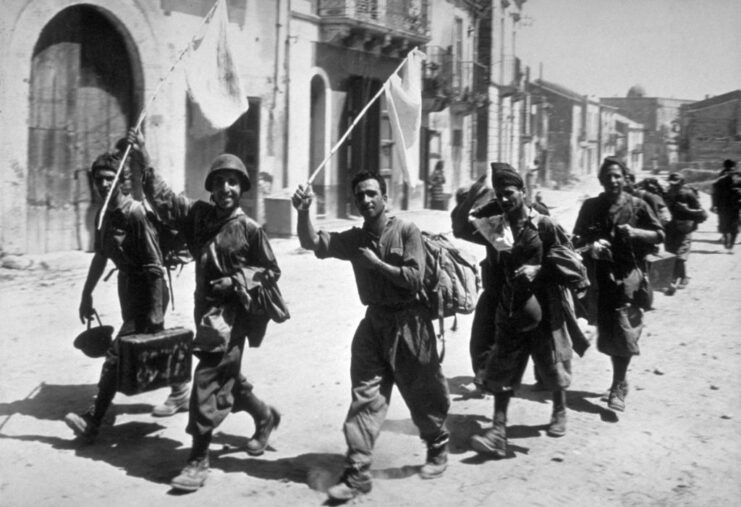
The March on Rome had far-reaching consequences for Italy and the world. Benito Mussolini’s fascist regime sought to revive the Roman Empire, leading to military campaigns in Africa and the Balkans. Italy’s alliance with Germany and participation in World War II were direct results of his ambitions and the authoritarian state he’d built.
During the conflict, Italy’s military performance was often poor, and the country became increasingly dependent on Germany; Mussolini’s decision to enter the war on the side of the Axis powers ultimately led to disaster.
More from us: 34 Miles of Tunnels Were Dug By the British Military Beneath the Rock of Gibraltar
By 1943, Italy had been invaded by Allied forces, and Mussolini was deposed. His regime’s collapse marked the end of Fascist rule in Italy and contributed to the broader defeat of the Axis powers.
The post The March on Rome and Benito Mussolini’s Quest to Turn Italy Into a Fascist Nation appeared first on warhistoryonline.
The March on Rome and Benito Mussolini’s Quest to Turn Italy Into a Fascist Nation
Philippines Truth
Post a Comment
0 Comments